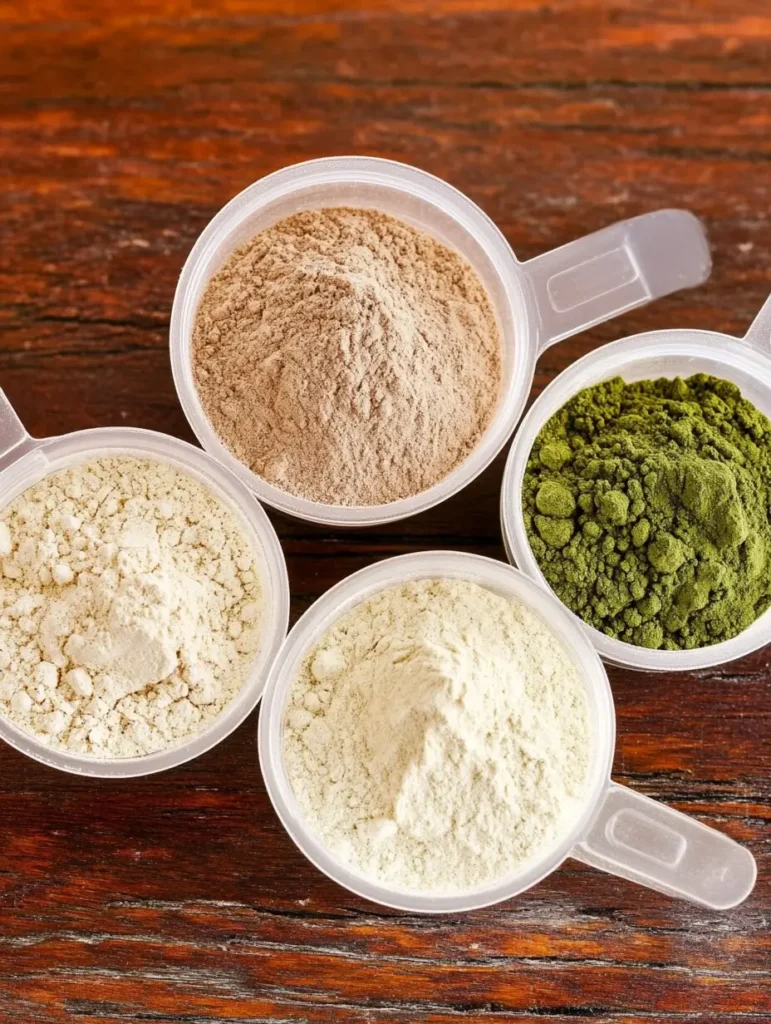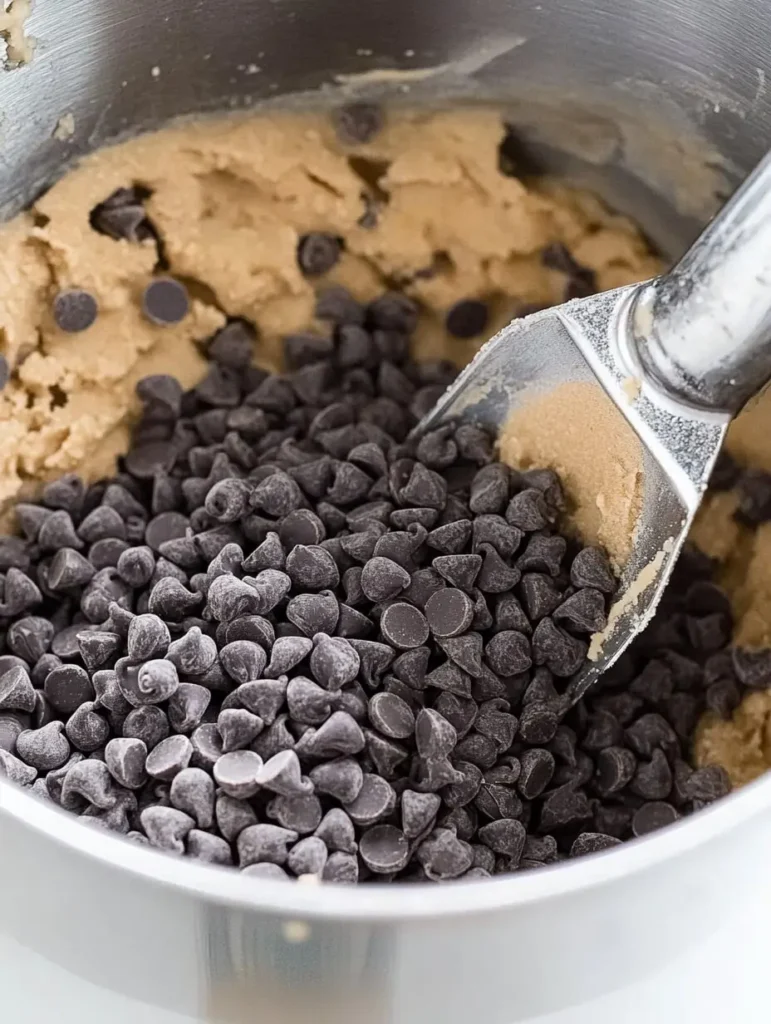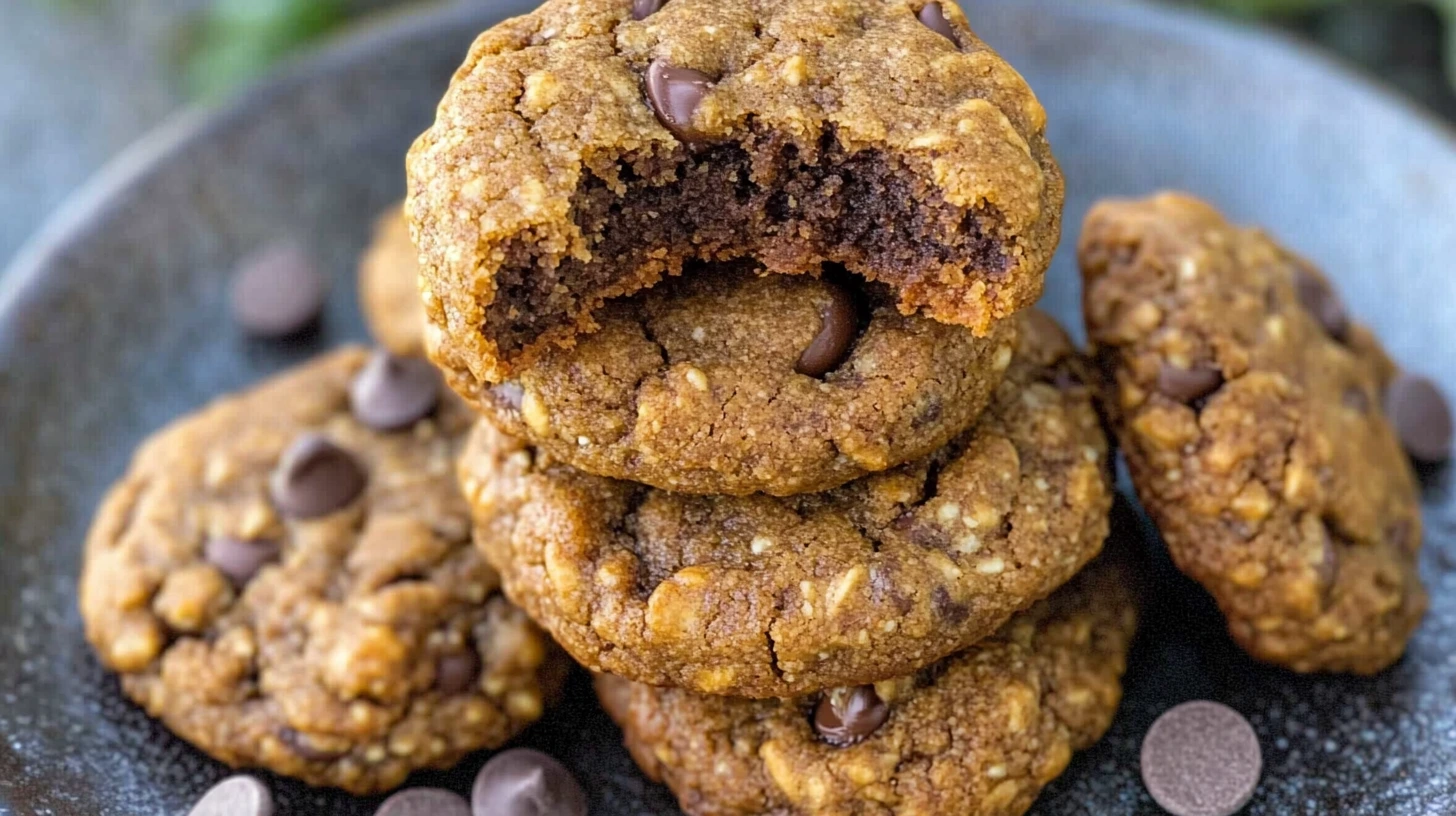Adding protein powder to a cookie recipe is a creative way to transform a simple treat into a nutritious snack. Whether you’re making just one cookie for yourself or testing out a small batch, incorporating protein powder can boost the nutritional profile without compromising on flavor. This guide will show you how to modify a single-serving cookie recipe to include protein powder, offer tips for maintaining the ideal texture and taste, and provide an easy-to-follow recipe to try at home.
Table of contents
Why Add Protein Powder to a Cookie?
Protein is essential for muscle repair, satiety, and overall health. Adding it to cookies allows you to enjoy a sweet treat while benefiting from the nutritional boost. Explore the The Ultimate Guide to Protein Cookie Benefits, Recipes, and Tips for more insights on why protein-enriched cookies are a fantastic choice.
1. Boosted Nutritional Value
Protein powder increases the protein content of your cookie, making it a more balanced snack. Instead of relying solely on sugar and carbs for energy, the added protein helps sustain energy levels and keeps you feeling fuller longer. It’s especially beneficial for individuals focused on muscle recovery, weight management, or maintaining a balanced diet.
2. Supports Muscle Recovery
For fitness enthusiasts, adding protein powder to a cookie is a fun and delicious way to refuel after a workout. Protein aids in muscle repair and growth, so a protein-packed cookie becomes the perfect post-exercise snack.
3. Healthier Alternative to Store-Bought Options
Many store-bought cookies are loaded with unhealthy fats, sugars, and preservatives. By baking a cookie with protein powder at home, you control the ingredients, ensuring a healthier, less processed treat.
4. Versatility in Flavors
Protein powders come in a variety of flavors like vanilla, chocolate, and peanut butter, allowing you to experiment and enhance the flavor profile of your cookie. For example:
- Vanilla Protein Powder: Perfect for a classic cookie with a sweet, creamy taste.
- Chocolate Protein Powder: Adds a rich, indulgent flavor to your cookie.
- Unflavored Protein Powder: Offers flexibility, letting the other ingredients shine.
5. A Convenient Single-Serving Option
Sometimes you only want one cookie—maybe for portion control or a quick snack. Protein powder allows you to create a nutritious, single-serving recipe that doesn’t require a full batch.
How Protein Powder Enhances a Cookie
Adding protein powder doesn’t just boost nutrition; it can also subtly improve texture. The powder can make the cookie denser and chewier, giving it a satisfying bite. When paired with the right ingredients like almond flour, oats, or mashed bananas, the result is a cookie that’s not only tasty but also soft and moist.
Choosing the Best Protein Powder for Baking
When adding protein powder to a cookie recipe, the type of protein powder you choose can significantly impact the flavor, texture, and overall success of your baked treat. Therefore, it’s essential to select the right one based on your desired outcome. Let’s explore some of the most popular protein powders and how they perform in baking:

1. Whey Protein Powder
- Why Choose Whey: Whey protein is one of the most common choices for baking because of its smooth texture and ability to mix easily with other ingredients. Additionally, it helps create soft and chewy cookies with a mild flavor that pairs well with most recipes.
- Best for: Classic cookies, such as chocolate chip or oatmeal.
- Tip: However, be mindful of the quantity, as too much whey protein can make the cookie dense or rubbery.
2. Casein Protein Powder
- Why Choose Casein: Casein protein has a thicker texture and absorbs more liquid than whey, making it a good option for creating denser cookies. Moreover, it retains moisture, which helps prevent dryness in your cookies.
- Best for: Soft-baked cookies or recipes with a fudgy texture.
- Tip: To achieve the perfect balance, combine casein with whey protein. This mix offers the chewiness of whey and the moisture retention of casein.
3. Plant-Based Protein Powders
- Why Choose Plant-Based Powders: Derived from sources like pea, soy, or brown rice, plant-based protein powders are ideal for vegan or dairy-free recipes. They tend to have an earthy flavor, which works well in recipes that incorporate nuts, seeds, or dark chocolate.
- Best for: Vegan cookie recipes or cookies with hearty flavors.
- Tip: Since plant-based powders can sometimes be grainy, make sure to sift the powder or blend it well into the dough.
4. Collagen Protein Powder
- Why Choose Collagen: Collagen protein is flavorless, making it a versatile choice for baking. Furthermore, it dissolves easily and doesn’t alter the texture of the cookie as much as other powders might.
- Best for: Recipes where you don’t want the protein powder to impact flavor, such as sugar cookies or snickerdoodles.
- Tip: Combine collagen with a flavored powder, like chocolate whey, if you prefer a stronger taste profile.
How to Choose the Right One
To choose the best protein powder for your cookie recipe, first consider your dietary preferences. For instance, if you’re vegan or lactose-intolerant, plant-based protein powders are your best bet. However, if you prioritize a smooth, chewy texture, whey protein is the way to go. Finally, think about the flavor profile—flavored powders like chocolate or vanilla can complement your recipe, while unflavored options work well when you want other ingredients to shine.
Adjusting Ingredients for One Cookie
When baking a single cookie, the key is to adjust the ingredient proportions carefully to maintain the desired taste and texture. Adding protein powder can make this process slightly trickier, but with the right tips and measurements, you can achieve a perfectly balanced, protein-packed treat. Let’s explore how to scale your ingredients down and incorporate protein powder seamlessly.
1. Start with a Basic Cookie Recipe
To create a single cookie, it’s best to start with a simple cookie recipe. This will allow you to experiment with proportions without the risk of wasting ingredients. For instance, a basic cookie recipe might include:
- 1 tablespoon of butter or coconut oil
- 1 tablespoon of sugar (or a sugar alternative like stevia)
- 2 tablespoons of flour
- 1 tablespoon of milk or water
- A pinch of baking powder and salt
By starting small, you can focus on how the protein powder affects the recipe and adjust accordingly.
2. Substituting Flour with Protein Powder
One of the most important steps in adding protein powder to a single-cookie recipe is adjusting the flour-to-protein powder ratio. Protein powder can replace part of the flour, but not all of it, as it doesn’t have the same structure-building properties.
- General Rule: Replace 25% to 50% of the flour with protein powder. For a single cookie, this translates to substituting ½ to 1 tablespoon of flour with protein powder.
- Example: If your recipe calls for 2 tablespoons of flour, use 1½ tablespoons of flour and ½ tablespoon of protein powder instead.
3. Balance the Liquids
Protein powder absorbs more liquid than flour, which can lead to dryness if not addressed. To counteract this, slightly increase the liquid in your recipe.
- Tip: Add an extra teaspoon of milk, water, or another liquid for every tablespoon of protein powder used. For a richer flavor, try using almond milk, coconut milk, or even brewed coffee, depending on your cookie flavor.
4. Sweeten to Taste
Protein powders—especially unflavored or plant-based varieties—can have a slightly bitter or earthy taste. To balance this, consider adjusting the sweetness of your recipe. You can use:
- A touch more sugar
- Natural sweeteners like honey or maple syrup
- Zero-calorie options like monk fruit or stevia for a low-calorie cookie
5. Add Fats for Moisture and Flavor
Fats like butter, coconut oil, or nut butters play a critical role in keeping the cookie moist and flavorful, especially when protein powder is involved. For a single cookie, you might use:
- 1 tablespoon of butter for a classic cookie taste
- 1 tablespoon of almond or peanut butter for added protein and richness
6. Mix Thoroughly
When working with a small batch, it’s essential to mix your ingredients thoroughly to ensure even distribution. Use a small bowl and a spatula to combine the wet and dry ingredients until the dough is smooth.
7. Test and Tweak
Because every protein powder behaves differently in baking, you may need to experiment. For example:
- If the dough feels too sticky, add a pinch of flour.
- If it’s too dry, add a drop or two of milk.
- For a fluffier texture, include an extra pinch of baking powder.
Example Single-Serving Recipe
Here’s a quick single-cookie recipe with protein powder:
Ingredients:
- 1 tablespoon of butter
- 1 tablespoon of sugar (or alternative)
- 1½ tablespoons of flour
- ½ tablespoon of protein powder (whey or plant-based)
- 1 tablespoon of milk
- A pinch of baking powder and salt
Instructions:
- Preheat your oven to 350°F (175°C).
- In a small bowl, cream the butter and sugar.
- Add the flour, protein powder, baking powder, and salt. Mix well.
- Slowly incorporate the milk until a dough forms.
- Shape the dough into a ball and place it on a baking sheet lined with parchment paper.
- Bake for 10–12 minutes, or until golden brown. Let it cool slightly before enjoying!
Step-by-Step Guide to Adding Protein Powder to a Cookie Recipe
Adding protein powder to a cookie recipe might seem straightforward, but following a structured process ensures the best results. From choosing the right ingredients to baking, here’s a step-by-step guide to seamlessly incorporating protein powder into your cookie recipe.

1. Gather Your Ingredients
First and foremost, assemble all the ingredients you’ll need for your cookie. For instance, a protein-packed cookie typically requires the following:
- Protein Powder: Choose a flavor that complements the cookie (e.g., vanilla for a classic cookie, chocolate for a rich flavor).
- Flour: Use all-purpose, almond, or oat flour for structure.
- Fat: Butter, coconut oil, or nut butter to keep the cookie moist.
- Sweetener: Granulated sugar, brown sugar, or natural alternatives like honey or stevia.
- Liquid: Milk, water, or a dairy-free alternative to balance the dough.
- Add-Ins (Optional): Chocolate chips, nuts, or dried fruit for extra flavor.
By preparing everything in advance, you ensure a smooth baking process without interruptions.
2. Determine the Protein Powder Ratio
When using protein powder in your cookie, it’s important to adjust the ratio carefully. As a general rule, protein powder cannot fully replace flour because it lacks gluten, which provides the cookie’s structure.
To elaborate, aim to substitute 25% to 50% of the flour with protein powder.
- For example, if the recipe calls for 4 tablespoons of flour, replace 1–2 tablespoons with protein powder.
This substitution maintains the cookie’s texture while boosting its protein content.
3. Mix the Dry Ingredients
Next, combine all the dry ingredients in a small bowl. These typically include:
- Flour
- Protein powder
- Baking powder or baking soda (for leavening)
- A pinch of salt
Moreover, mixing these ingredients separately ensures even distribution of the protein powder and prevents clumping. Afterward, set this bowl aside while you prepare the wet ingredients.
4. Cream the Butter and Sugar
Meanwhile, in a larger bowl, cream the butter and sugar together until smooth and fluffy. This step is essential because it incorporates air into the dough, giving your cookie a light texture.
If needed, you can use coconut oil or nut butter as substitutes for regular butter. Furthermore, adjusting the sugar to taste allows you to control the sweetness, especially if your protein powder is already flavored.
5. Add the Liquid Ingredients
Then, mix in the liquid ingredients, such as milk, water, or plant-based alternatives. At this stage, it’s important to add the liquid slowly to avoid making the dough too wet.
In addition, consider using flavored liquids like almond milk, brewed coffee, or even orange juice to enhance the cookie’s flavor.
6. Combine Wet and Dry Ingredients
Now, gradually incorporate the dry ingredients into the wet mixture. While doing this, stir gently to avoid overmixing, as this can make the cookie tough.
If the dough feels dry, add a teaspoon of liquid at a time until it reaches the desired consistency. Conversely, if it feels too sticky, sprinkle in a little more flour.
7. Add Optional Mix-Ins
Once the dough is ready, fold in your favorite mix-ins, such as chocolate chips, nuts, or dried fruit. Additionally, this is the perfect time to experiment with unique flavors, like cinnamon chips or crushed pretzels, to give your cookie a creative twist.
8. Shape and Bake
Finally, shape the dough into a ball or flatten it slightly for even baking. Place it on a lined baking sheet, leaving enough space around it.
Bake at 350°F (175°C) for 10–12 minutes, or until the edges are golden brown. After baking, let the cookie cool slightly before enjoying your protein-packed treat!
FAQs: Adding Protein Powder to a Cookie Recipe
1. Can I use flavored protein powder in my cookie recipe?
Yes, flavored protein powders work well in cookies, as long as the flavor complements the other ingredients. For example, chocolate or vanilla protein powders pair nicely with most recipes. However, be cautious with overly sweet or artificial-tasting powders, as they might affect the overall taste.
2. Can I make a protein cookie without flour?
Absolutely! In fact, you can use alternatives like almond flour, oat flour, or even finely ground rolled oats. These substitutes provide structure while working well with protein powder. Some recipes also rely entirely on nut butters and protein powder for a flourless option.
3. How do I prevent protein cookies from becoming dry?
Protein powder absorbs more liquid than flour, which can lead to dryness. To counteract this, increase the liquid or fat in your recipe slightly. Additionally, using ingredients like mashed bananas, Greek yogurt, or applesauce helps retain moisture.
4. What’s the best protein powder for baking cookies?
The best protein powder depends on your dietary needs and flavor preferences. Whey protein is versatile and works well for most recipes. Alternatively, plant-based powders like pea or soy protein are excellent for vegan cookies. For a neutral taste, collagen protein is another great option.
5. Can I freeze protein cookie dough?
Yes, protein cookie dough freezes well. To do this, shape the dough into balls and place them on a lined tray. Once frozen, transfer the balls to a freezer-safe container. When you’re ready to bake, simply thaw the dough slightly and bake as instructed.
6. Is it possible to make a vegan protein cookie?
Definitely! Use plant-based protein powder and substitute ingredients like butter with coconut oil or vegan margarine, and eggs with flaxseed or chia seed “eggs.” Moreover, dairy-free milk works perfectly as a liquid.
Conclusion
Incorporating protein powder into a cookie recipe is a simple yet effective way to create a nutritious treat. Not only does it add a protein boost, but it also allows you to experiment with flavors and ingredients to suit your preferences. From choosing the right protein powder to adjusting the ingredient ratios, following these steps ensures a cookie that’s both delicious and satisfying.
Whether you’re baking for a post-workout snack or a single-serving indulgence, protein cookies are a fantastic way to enjoy something sweet without compromising your goals. So why wait? Grab your favorite protein powder and start baking your own protein-packed creations today!

